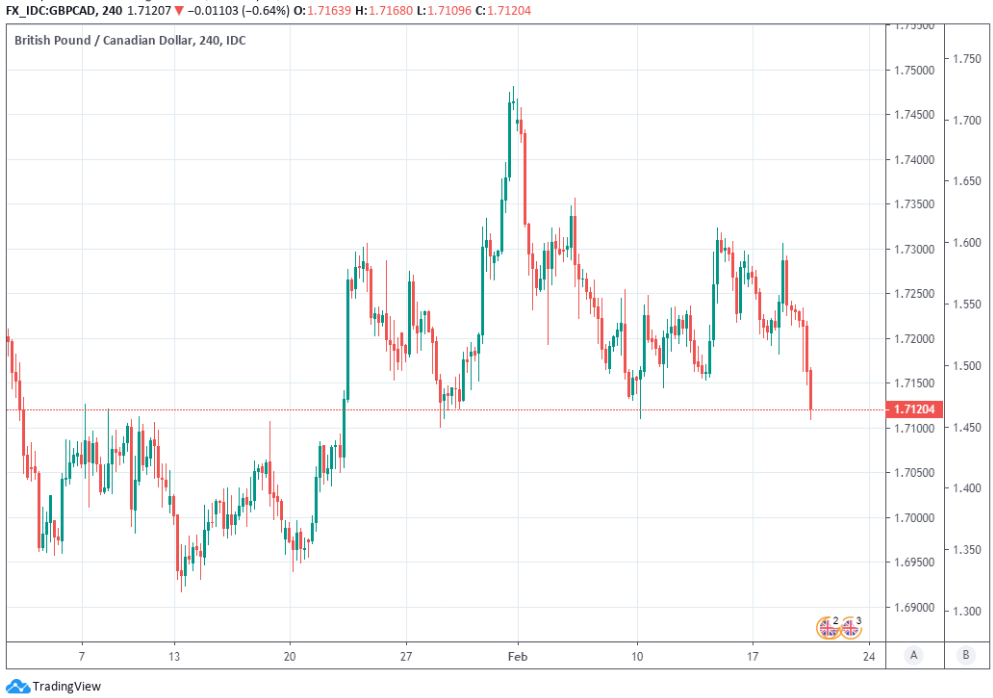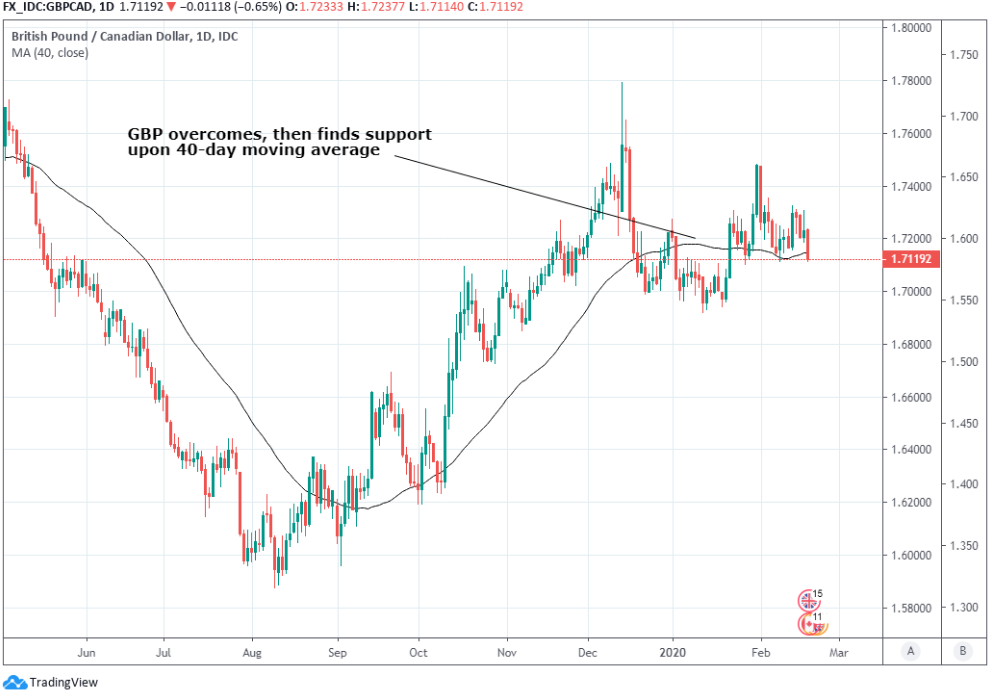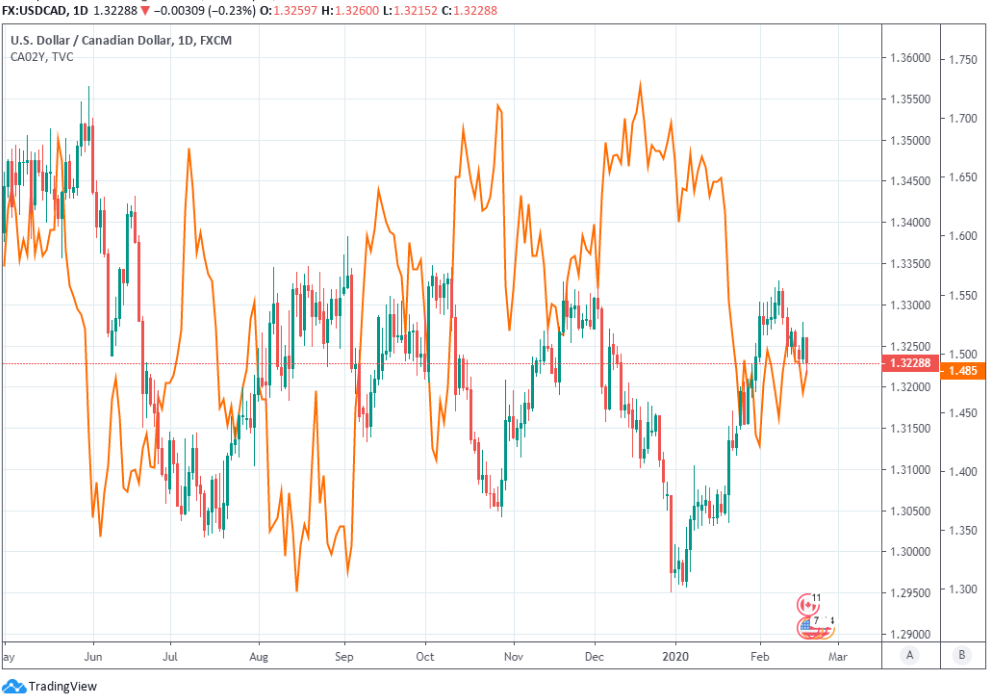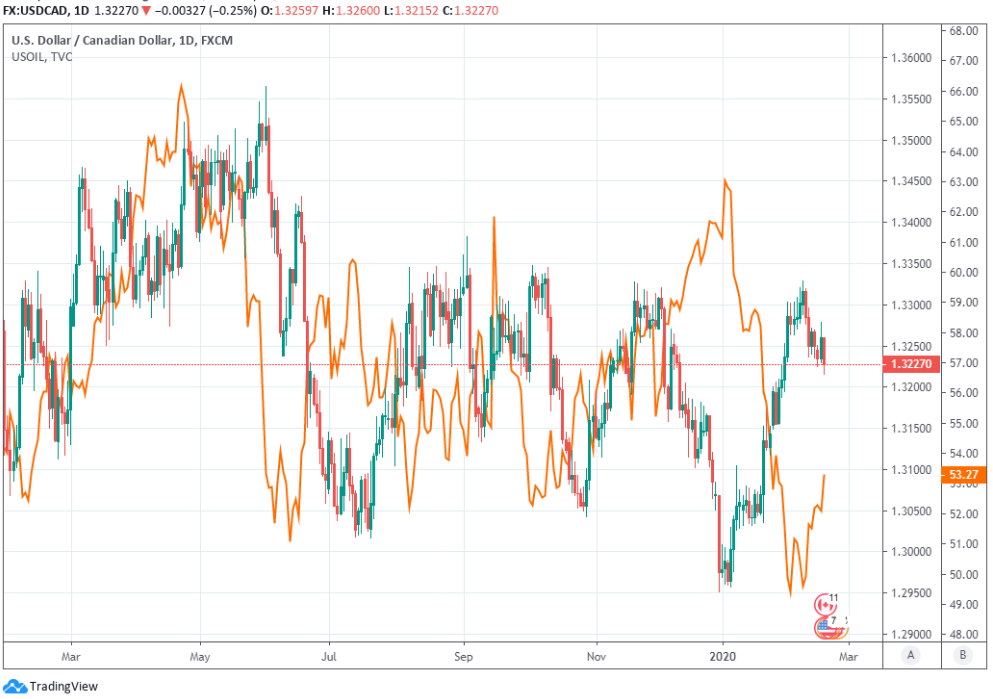Canadian Dollar Strength Risks Killing Off GBP/CAD Uptrend
- Written by: James Skinner
-
- GBP weakness pulls GBP/CAD into conflict with key levels.
- CAD buoyed by oil price rise, gets no help from Jan CPI data.
- Rising CPI doesn't preclude BoC from a rate cut, RBC says.
- RBC looks for an April cut as Friday retail sales data looms.

Image © Adobe Stock
- GBP/CAD Spot rate: 1.7081, -0.04%
- Indicative bank rates for transfers: 1.6483-1.6603
- Transfer specialist indicative rates: 1.6850-1.6927 >> Get your quote now
A rise in global oil prices has aided a fresh bout of Canadian Dollar strength, ensuring the Pound-to-Canadian Dollar exchange rate's multi-week rally is close to being declared dead from a technical perspective and a sustained move lower could now be in prospect.
GBP/CAD fell 0.68% in the mid-week session amidst a surge in value in oil-linked currencies, with the decline against the Canadian Dollar being surpassed only by a -1.01% loss to the Norwegian Krone.
WTI crude oil futures prices were up 1.44% and the global benchmark, Brent crude, was up 1.8% in a session that also saw Statistics Canada confirm inflation pressures were resilient in January.
Oil is Canada's largest export and inflation, which rose faster than markets anticipated, matters for the interest rate outlook. Inflation rose from 2.2% to 2.4% in January, while the average of three 'core' measures ticked modestly lower but remained above the 2% target of the Bank of Canada (BoC).
Above: Pound-to-Canadian Dollar rate shown at 4-hour intervals.
Technical analysts at a major Canadian bank had been watching for GBP/CAD to remain supported above 1.71, but the subsequent break now draws questions on whether Sterling's run higher against its Canadian counterpart is over.
"We think the GBP should remain well-supported above 1.71 and if the cross can maintain a positive undertone, it should put incremental pressure on the upper 1.73 zone. Bullish momentum should pick up more above here and push on for a retest of key, long run resistance now at 1.7750/00," says Juan Manuel Herrera, a strategist at Scotiabank, in a Tuesday note to clients.
Herrera has flagged the 40-day moving average of prices that's located at 1.7148 as a notable support for the Pound-to-Canadian Dollar rate and the 1.7115 level as a rubicon that must be respected to preserve an uptrend that's characterised trading in the exchange rate since August last year.
However, the subsequent close below the 1.7115 support level now exposes the six-month uptrend to failure.
Herrera has previously said that a Pound-to-Canadian Dollar failure at the 1.7115 level could prompt a further correction that takes the exchange rate back to 1.66, and Scotiabank forecasts that Sterling will average 1.70 against the Loonie for the 2020 year.
Above: Pound-to-Canadian Dollar rate shown at daily intervals, with 40-day moving-average overlayed (black line).
"On-target inflation was one of the key reasons the BoC remained on the sidelines in 2019 while many other central banks, including the Fed and ECB, lowered interest rates. But while core inflation remains on the mark (and headline even firmer), the story has changed," says Josh Nye, a senior economist at RBC Capital Markets. "We don't see current inflation readings as a barrier to the BoC cutting its benchmark rate to support growth and get the economy back to its potential."
Wednesday's inflation figures lifted Canadian bond yields but prompted a decline in the value of the currency even as market expectations of a BoC rate cut were pared back in response to the data , doubtlessly because higher inflation reduces the value of a currency and the cash flows earned from it if interest rates do not rise sufficiently to offset the reduction in purchasing power. No major forecasters see the BoC lifting rates this year and the market itself is wagering heavily that rates will be cut to 1.5% by year-end.
Interest rate decisions are taken with a view to ensuring inflation remains at or near to a preset target over the coming years and RBC's Nye says the BoC is likely viewing the recent slowdown in the Canadian economy as a natural handbrake for inflation pressures that might even permit the bank to cut interest rates in order to support growth over the short and medium-term.
Above: USD/CAD rate, shown at daily intervals, and its negative correlation with 2-year CA Gov bond yields (orange line).
"We think the BoC's tolerance of sluggish activity (coronavirus, the GM Oshawa closure, and rail disruptions seem to guarantee another quarter of sub-trend GDP growth in Q1/20) will wear thin," Nye says.
RBC forecasts an April rate cut from the BoC, which the currency and bond markets are unprepared for if overnight-index-swap (OIS) pricing is anything to go by. The OIS market implied on Wednesday an April 15 cash rate of 1.63%, which is above the 1.5% that would prevail after a typical rate cut, although this presents two-way risks for both the Canadian Dollar and bonds. 2-year Canadian bond yields have, however, been below 1.5% since late January.
The BoC said in January it will be paying particular attention to "developments in consumer spending, the housing market, and business investment," as it determines its next interest rate decisions and for that reason, Friday's retail sales figures are arguably the most important release of the week for the Canadian Dollar. Consensus is looking for sales to have risen 0.1% in December after a 0.9% November gain with core retail sales, which ignore car purchases, rising 0.4% after a 0.2% increase previously.
Above: USD/CAD rate, shown at daily intervals, and its ever-changing relationship with WTI crude oil (orange line).













